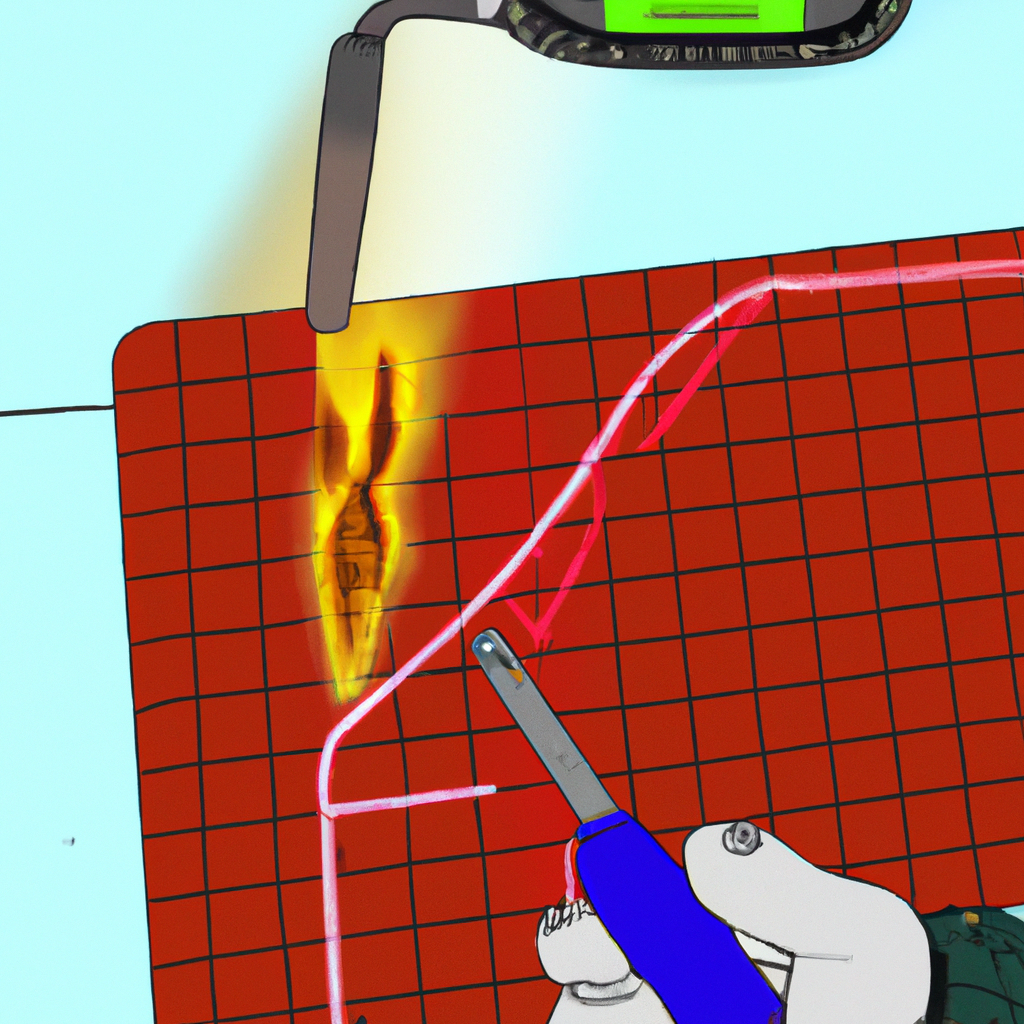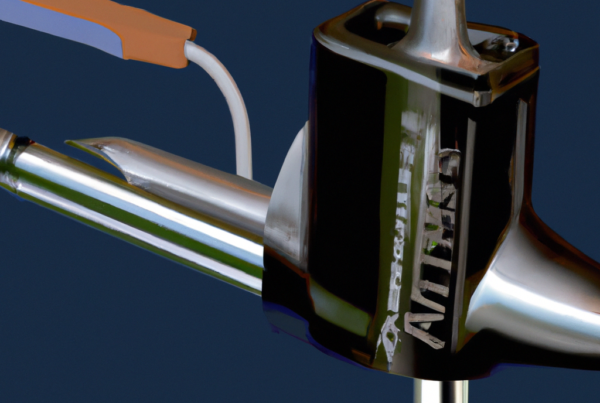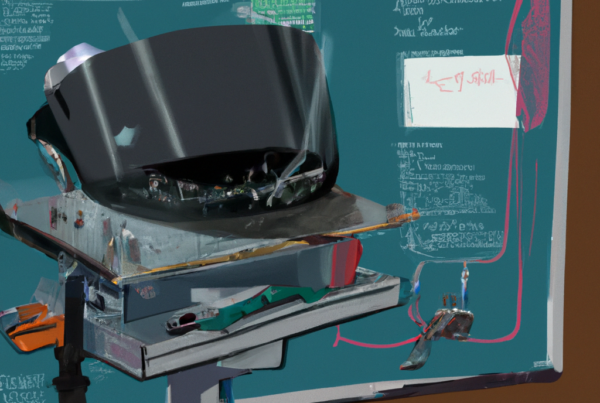If you are looking for a reliable and versatile way to join two metals together, look no further than brazing with a TIG welder. Brazing is an effective and efficient way to join two metals together that uses an alloy with a lower melting point than the base metals, allowing it to melt and flow between the two pieces and form a strong bond. With a TIG welder, you can control the temperature of the welding process to ensure that your brazing job is successful every time. Not only is TIG welding a great way to braze, but it is also a great way to weld other materials such as aluminum, stainless steel, and titanium.

What is Braze Welding?
Braze welding is a metal joining process used to join two pieces of metal together, usually copper or brass, through the use of an alloy that melts at a lower temperature than the base metals.
The process of braze welding uses a filler metal that melts at a lower temperature than the base metals. The filler metal is then heated to its melting point and then applied to the joint. The filler metal is then allowed to cool and harden, creating a strong bond between the two pieces of metal. The process is often used in applications such as plumbing and jewelry making.
Braze welding is a relatively simple process and can be done with a variety of tools. It is often used in place of soldering or brazing, which require more specialized tools and higher temperatures. The process is also relatively inexpensive, making it a popular choice for many types of metal joining.
The answer to the question “Can you braze with a tig welder?” is yes. Tig welding is a type of arc welding process that can be used to join different types of metals, including steel, aluminum, and copper. When using a tig welder to braze, a special filler metal with a lower melting point than the base metals must be used. Additionally, the welding process must be done slowly and carefully to ensure that the filler metal fully penetrates the joint and creates a strong bond.
What is TIG Welding?
TIG welding is an arc welding process that uses a non-consumable tungsten electrode to create the weld. It is often referred to as “Heliarc” welding and is used to join metals such as aluminum, stainless steel, and copper alloys.
The TIG welding process involves creating an arc between the tungsten electrode and the metal being welded. Heat generated by the arc melts the metal and creates a weld. During the process, an inert gas such as argon is used to shield the weld from contamination. This gas also provides additional heat to help increase the weld penetration.
The main benefit of TIG welding is its ability to create high-quality welds with minimal distortion. It is also well-suited for thin materials and is capable of welding in tight spaces. Additionally, TIG welding is often used to join dissimilar metals and is capable of creating intricate welds.
Can you braze with a TIG welder? While it is possible to use a TIG welder for brazing, it is generally not recommended due to the risk of contamination. Brazing requires a much lower temperature than welding and the temperature of a TIG weld may be too high and cause the brazing material to burn. For best results, use a dedicated brazing torch.
What is the Difference Between Braze and TIG Welding?
Braze welding and TIG welding are two different welding techniques used to join metals. Braze welding is a process of joining two or more metals by using a filler material, while TIG welding uses a non-consumable tungsten electrode to weld pieces of metal together. The main difference between the two is the type of materials used, the temperature required, and the speed of welding.
Braze welding is used to join materials that require a lower temperature than TIG welding. This process uses a filler material to bond the two pieces of metal together. The filler material melts at a lower temperature than the metal being joined, and this enables the weld to form a strong bond. Braze welding is often used for joining copper, brass, and aluminum, and it is a relatively quick process. It does not require the high temperatures used in TIG welding, and it is often used for repairs and maintenance.
TIG welding, on the other hand, requires a higher temperature than braze welding. This process uses a non-consumable tungsten electrode to weld two pieces of metal together. The high temperatures involved in this process enable the metals to form a strong bond. TIG welding is often used for welding aluminum, stainless steel, and carbon steel, and it is more time consuming than braze welding. This process also requires more skill than braze welding.
The answer to the question “Can you braze with a TIG welder?” is yes, you can. However, it is not recommended because the high temperatures required for TIG welding are not suitable for braze welding. Braze welding requires lower temperatures, so it is best to use a dedicated braze welding machine for this purpose.
What are the Benefits of Braze Welding?
Braze welding offers many benefits over more traditional welding techniques. It is a fast, reliable, and cost-effective method of joining metal components. Here are the main advantages:
- Easy to learn and use: Brazing is a simple and straightforward process that requires minimal skill and experience to master.
- Versatile: Brazing can be used to join a wide variety of metals, including aluminum, steel, and copper. It can also be used to join dissimilar metals.
- Strong, durable joints: Brazed joints are strong and reliable. The joint is stronger than the metal itself, making it a highly durable connection.
- Flexible: Brazing can be used to join metals of different thickness and shapes. This allows you to create complex shapes and structures that are strong and reliable.
- Lower temperatures: Brazing requires lower temperatures than other welding methods, making it safer and more efficient.
Can you braze with a TIG welder? Yes, TIG welding can be used to braze metal components. However, TIG welding is generally used for more intricate welds that require higher skill levels and more precise control.
What are the Limitations of Braze Welding?
Braze welding is a popular form of welding, but there are some limitations to consider. Here are some of the most common limitations of braze welding:
- The amount of heat applied to the workpiece needs to be carefully monitored, as too much heat can cause excessive oxidation and burning.
- It is not possible to weld materials with a large difference in melting points, such as steel and aluminum.
- The workpiece must be thoroughly cleaned before brazing, and any contaminants can interfere with the quality of the weld.
- Brazing often requires an inert gas, such as argon, to prevent oxidation of the weld.
Can you braze with a tig welder? While it is possible to braze with a tig welder, the process is more difficult and time consuming than with a dedicated brazing torch. Additionally, tig welding is typically done with higher temperatures which can cause more oxidation and burning of the workpiece than with a dedicated brazing torch.
What is the Process for Braze Welding?
Braze welding is a metal joining process that involves the use of a special type of filler material (often referred to as a “braze alloy”) to join two or more pieces of metal together. The process is simple and straightforward, but generally requires a higher temperature than other welding processes. Here are the steps for successful braze welding:
- Clean the two (or more) pieces of metal to be joined. Make sure all dirt, grease, and other contaminates are removed.
- Apply the appropriate flux to the area to be joined. This helps ensure a good bond.
- Heat the area to be joined with a torch. The temperature should be just below the melting point of the braze alloy.
- Once the area is hot enough, add the braze alloy to the joint.
- Continue to heat the area and move the braze alloy around until the entire joint is filled.
- Allow the joint to cool slowly. This will help ensure a strong, secure bond.
Can you braze with a tig welder? Yes, it is possible to braze with a tig welder. However, you will need to make sure that the tig welder is set to the correct temperature and that the correct filler material is used. It is also important to follow the same steps outlined above.
Can You Braze with a TIG Welder?
Yes, it is possible to braze with a TIG welder. However, it is important to understand that brazing requires a much higher temperature than TIG welding, so you should ensure you are using the right equipment for the job. Here are some tips for successful brazing with a TIG welder:
- Choose the correct filler material. When brazing with a TIG welder, you should use a filler material that is specifically designed for brazing, such as silver brazing rods.
- Ensure your equipment is capable of reaching the correct temperature. Brazing requires a much higher temperature than TIG welding, so you should make sure your TIG welder is capable of reaching the required temperature for brazing.
- Use the correct technique. It is important to use the correct technique when brazing with a TIG welder. This includes preheating the metal, applying the filler material, and then allowing the metal to cool slowly.
Brazing with a TIG welder can be a difficult task, but with the right equipment and technique, it can be done successfully. If you are unsure about the process, it is best to consult a professional to ensure the job is done correctly.
What Are the Advantages of Braze Welding with a TIG Welder?
Braze welding with a TIG welder offers several advantages when compared to other welding processes. Firstly, it allows for precise and accurate welding. This is because TIG welding requires a high level of focus and skill, as it involves more than just passing a welding rod along a weld joint. Secondly, TIG welders are capable of welding a wide range of materials, including aluminum, stainless steel, copper, and titanium. Thirdly, this type of welding is also much cleaner and faster than other welding processes. Finally, TIG welding requires less post-welding clean-up, as it only requires minimal grinding and finishing.
The use of a TIG welder for brazing is possible, although it is not recommended due to the high temperatures required. The brazing temperature is generally higher than the recommended TIG welding temperature, which could lead to excessive heat input and distortion of the work piece. It is also important to note that the weld pool in brazing is usually larger than in TIG welding, and the filler material must be compatible with the base metal.
What Are the Disadvantages of Braze Welding with a TIG Welder?
Braze welding with a TIG welder can be difficult to master and requires a great deal of skill and practice. It can also be slow and time-consuming, and the heat can be difficult to control, which can lead to warping of the materials being welded. Additionally, brazing can be expensive due to the need for specialized equipment.
There are several drawbacks to consider when braze welding with a TIG welder:
- It requires a great deal of skill and practice to master.
- It can be slow and time-consuming.
- Heat can be difficult to control, which can lead to warping of the materials being welded.
- It can be expensive due to the need for specialized equipment.
What Are the Safety Considerations for Braze Welding with a TIG Welder?
When braze welding with a TIG welder, it is important to consider the following safety precautions:
- Always wear protective clothing, goggles, and a face shield when welding.
- Make sure the welding area is well-ventilated and free of combustible materials.
- Keep the welding area free of metal shavings and sparks.
- Keep a fire extinguisher near the welding area.
- Keep a first aid kit nearby in case of an emergency.
- Never touch the electrodes or the welding torch without wearing protective gloves.
- Never exceed the maximum amperage specified by the manufacturer.
- Always use the correct welding technique for the job.
- Never leave the welding area unattended when welding.
These safety considerations should always be followed when braze welding with a TIG welder. Failure to do so can lead to serious injury or death.



